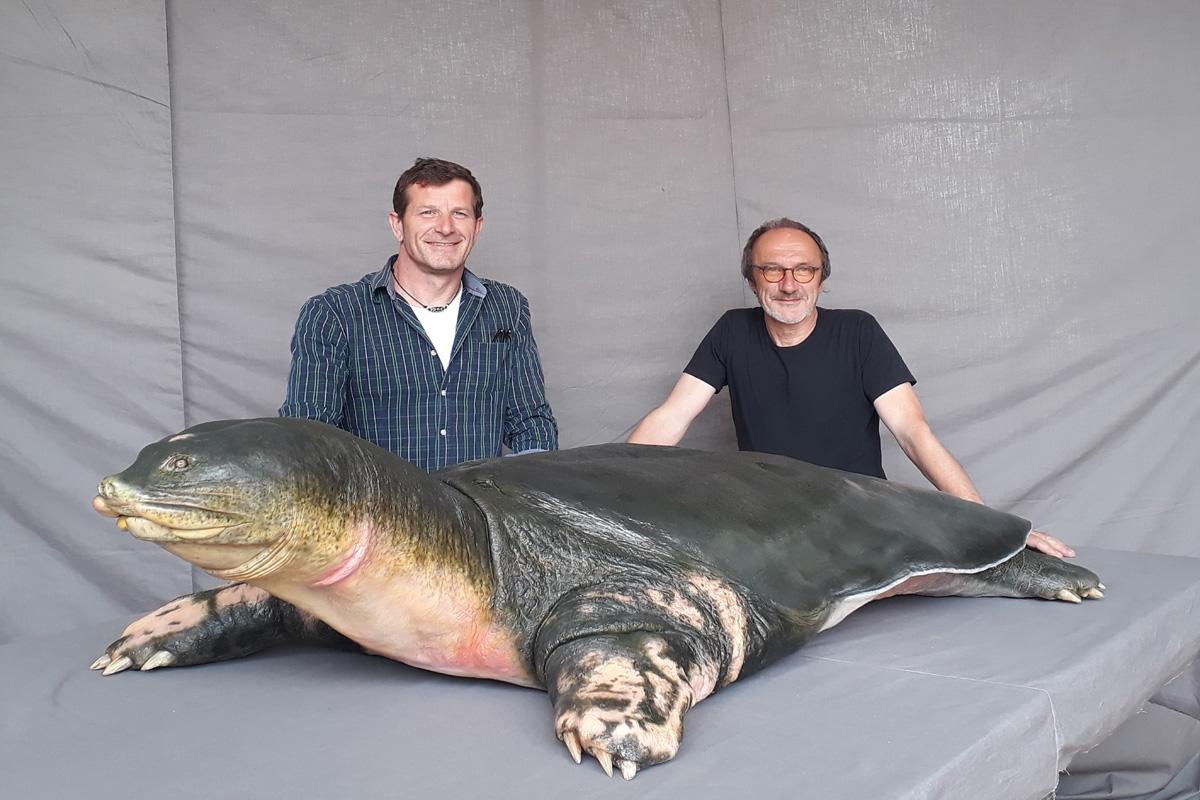Under the direction of the taxidermists Jürgen Fiebig from the Museum für Naturkunde Berlin and Marco Fischer from the Naturkundemuseum Erfurt, both world and European champions in taxidermy, an almost extinct and sacred Yangze giant soft turtle (Rafetus swinhoei) was prepared in Hanoi. The taxidermists were supported by a team from the National Museum for Nature in Hanoi. On 18 March 2019, the specimen of the largest and rarest freshwater turtle in the world was presented at the Ngoc Son Temple in Hanoi. Through international cooperation, the Museum für Naturkunde Berlin is fulfilling its mission and helping to pass on its understanding of nature to future generations.
The stately male of the Yangze giant soft tortoise (Rafetus swinhoei), who died on 19 January 2016, lived for many decades in a lake in the middle of the capital Hanoi. With a total length of about 2 m and a weight of about 170 kg, it is the largest specimen of its almost extinct species. In the meantime, only one pair still lives in a Chinese zoo, although attempts at artificial breeding have so far been unsuccessful. The existence of one or two further specimens, which are said to have been sighted in Vietnamese lakes, is not assured.
The turtle from Lake Hoan-Kiem is not only a zoological rarity, it was also revered in Vietnam as a famous national sanctuary whose legend dates back to the 15th century. Every child in Vietnam knows the history of the holy turtle, which was also affectionately called "Cu Rua" (grandfather) and worshipped as the protector of the country. For this reason, she is exhibited in a temple on an island of the lake next to another turtle of this species, which was salvaged and preserved from the lake in 1968. Since the conservation at that time did not yield a satisfactory result, the Vietnamese government asked for the help of the German experts.
The taxidermists Jürgen Fiebig from the Museum für Naturkunde Berlin and Marco Fischer from the Naturkundemuseum Erfurt prepared the object during several working visits and supported by a Vietnamese team in Hanoi. The particular difficulty was that this group of turtles did not have a horn shell, but a soft, leather-like shell whose sides and rear part are flexible. In several labour-intensive and time-consuming steps the preservation was carried out by PEG impregnation (polyethylene glycol). The non-preservable skin colouring could be restored almost to life with the airbrush technique.
